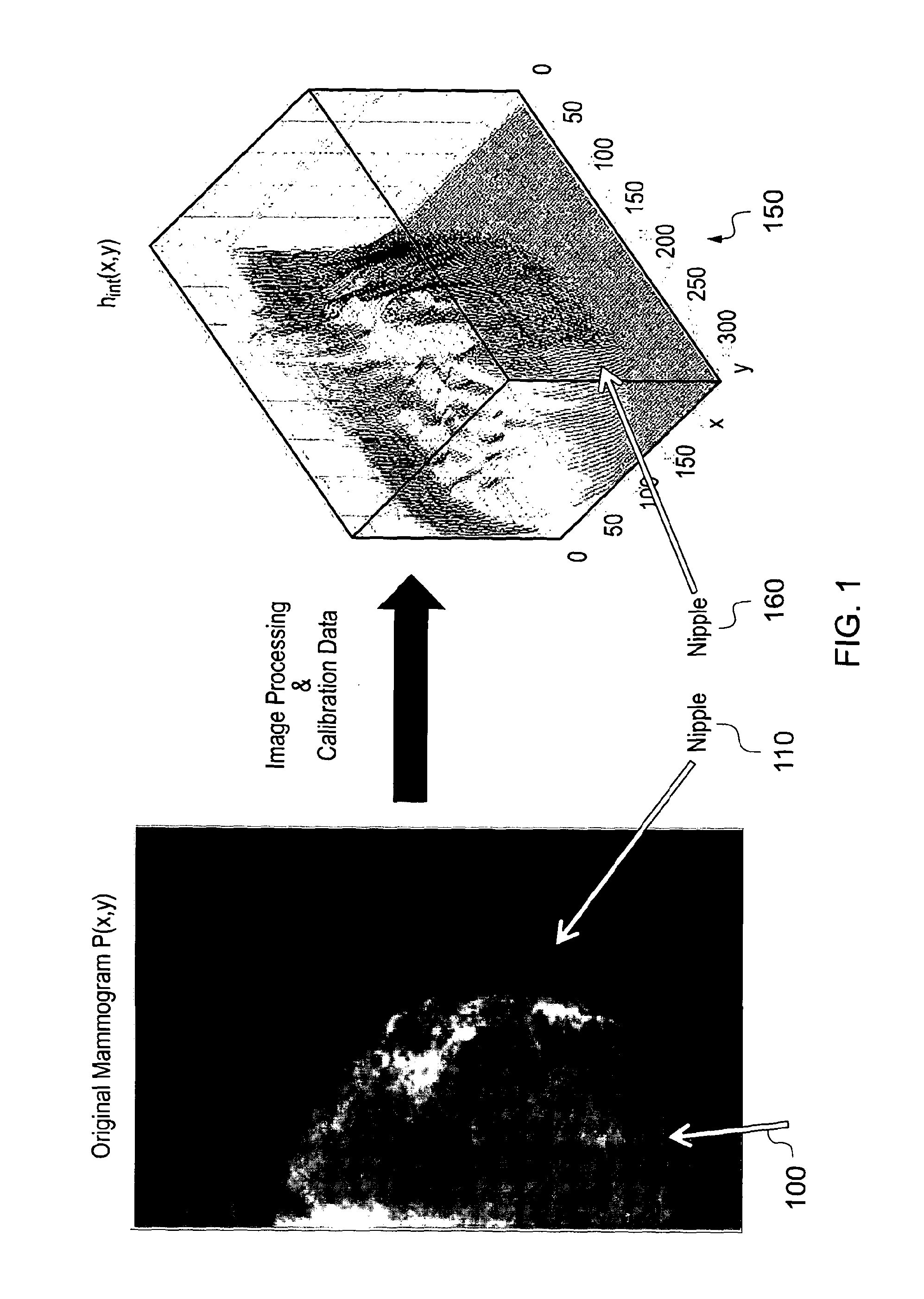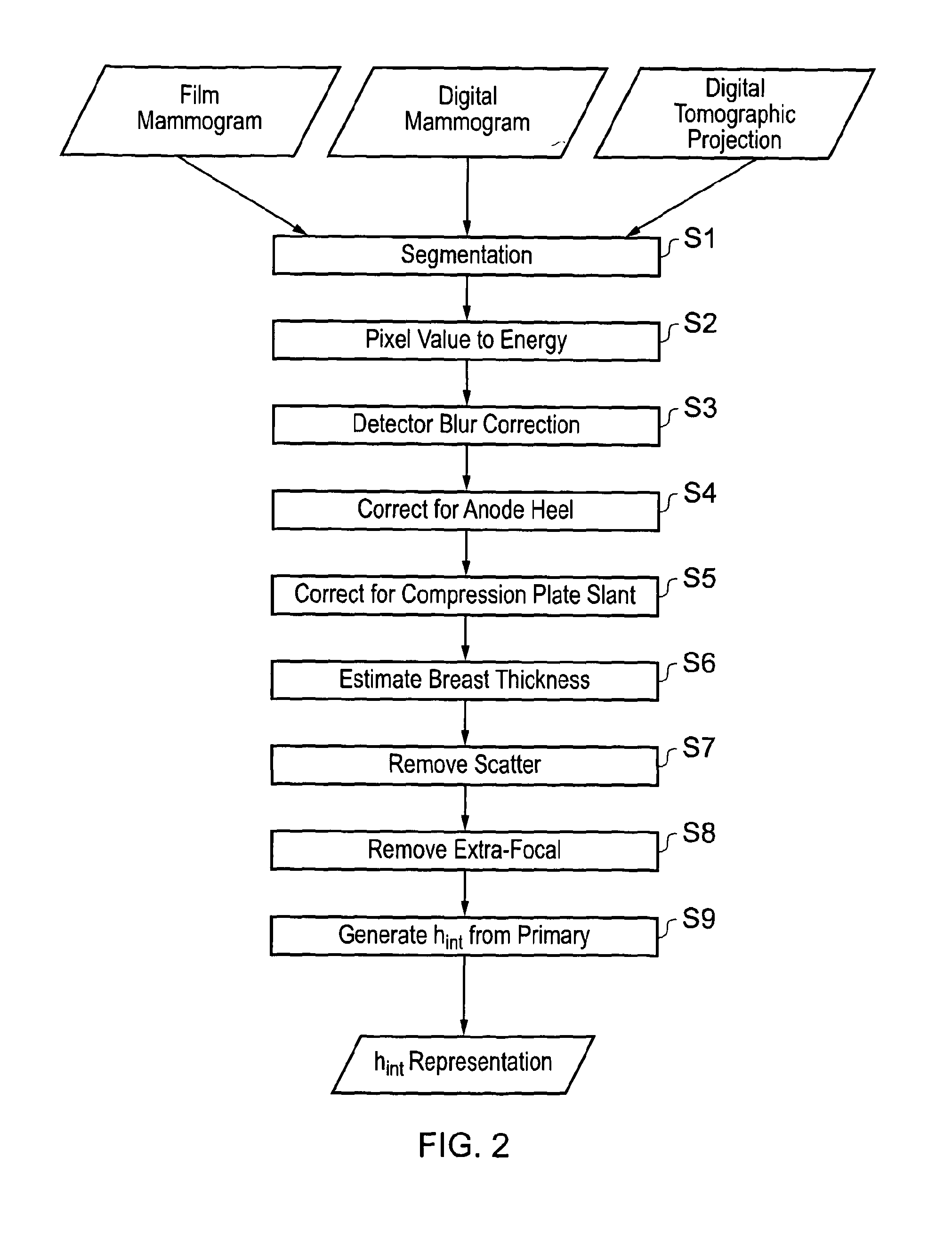Method and system for analysing tissue from images
a tissue analysis and image technology, applied in image data processing, instruments, character and pattern recognition, etc., can solve the problems of inherently unreliable approaches, errors in breast density of 2-3%, and error correction performed via breast thickness estimation might not be correcting for error in the correct way
- Summary
- Abstract
- Description
- Claims
- Application Information
AI Technical Summary
Benefits of technology
Problems solved by technology
Method used
Image
Examples
Embodiment Construction
[0095]In FIG. 1, the mammogram shows a breast 100 which is relatively fatty (as indicated by the relative darkness of the image) with some denser tissue notable towards the nipple 110 (the whiter parts). In what is referred to as the hint representation 150 (on the right of the picture), peaks towards the nipple 160 indicate high values of hint, i.e. denser tissue.
[0096]Once the hint representation is generated, numerous clinically useful tasks can be performed, including, but not limited to: automatic estimation of breast composition by summing up the hint and hfat values and subsequently computing breast density; optimized display of the image ready for the radiologist to view; tracking an object's development over time to ascertain whether it is growing; computer-aided detection, whereby the computer marks onto the image suspect areas for the radiologist to consider; generally analyzing multiple images (temporal, dual energy, views etc).
[0097]The first embodiment notes that dense...
PUM
 Login to View More
Login to View More Abstract
Description
Claims
Application Information
 Login to View More
Login to View More - R&D
- Intellectual Property
- Life Sciences
- Materials
- Tech Scout
- Unparalleled Data Quality
- Higher Quality Content
- 60% Fewer Hallucinations
Browse by: Latest US Patents, China's latest patents, Technical Efficacy Thesaurus, Application Domain, Technology Topic, Popular Technical Reports.
© 2025 PatSnap. All rights reserved.Legal|Privacy policy|Modern Slavery Act Transparency Statement|Sitemap|About US| Contact US: help@patsnap.com



